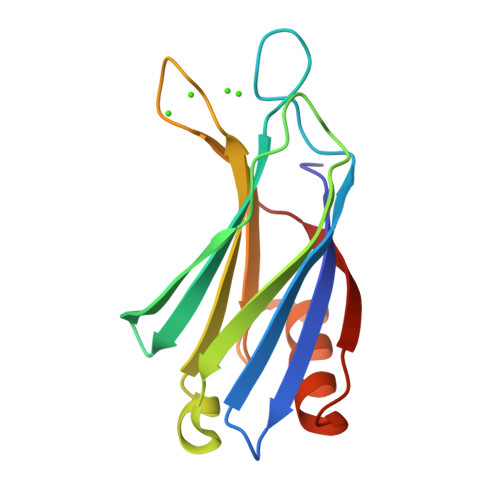Structural and mutational analysis of functional differentiation between synaptotagmins-1 and -7.
Xue, M., Craig, T.K., Shin, O.H., Li, L., Brautigam, C.A., Tomchick, D.R., Sudhof, T.C., Rosenmund, C., Rizo, J.(2010) PLoS One 5: 12544-12544
- PubMed: 20824061
- DOI: https://doi.org/10.1371/journal.pone.0012544
- Primary Citation of Related Structures:
3N5A - PubMed Abstract:
Synaptotagmins are known to mediate diverse forms of Ca2+-triggered exocytosis through their C2 domains, but the principles underlying functional differentiation among them are unclear. Synaptotagmin-1 functions as a Ca2+ sensor in neurotransmitter release at central nervous system synapses, but synaptotagmin-7 does not, and yet both isoforms act as Ca2+ sensors in chromaffin cells. To shed light into this apparent paradox, we have performed rescue experiments in neurons from synaptotagmin-1 knockout mice using a chimera that contains the synaptotagmin-1 sequence with its C2B domain replaced by the synaptotagmin-7 C2B domain (Syt1/7). Rescue was not achieved either with the WT Syt1/7 chimera or with nine mutants where residues that are distinct in synaptotagmin-7 were restored to those present in synaptotagmin-1. To investigate whether these results arise because of unique conformational features of the synaptotagmin-7 C2B domain, we determined its crystal structure at 1.44 A resolution. The synaptotagmin-7 C2B domain structure is very similar to that of the synaptotagmin-1 C2B domain and contains three Ca2+-binding sites. Two of the Ca2+-binding sites of the synaptotagmin-7 C2B domain are also present in the synaptotagmin-1 C2B domain and have analogous ligands to those determined for the latter by NMR spectroscopy, suggesting that a discrepancy observed in a crystal structure of the synaptotagmin-1 C2B domain arose from crystal contacts. Overall, our results suggest that functional differentiation in synaptotagmins arises in part from subtle sequence changes that yield dramatic functional differences.
Organizational Affiliation:
Department of Neuroscience, Baylor College of Medicine, Houston, Texas, United States of America.



















